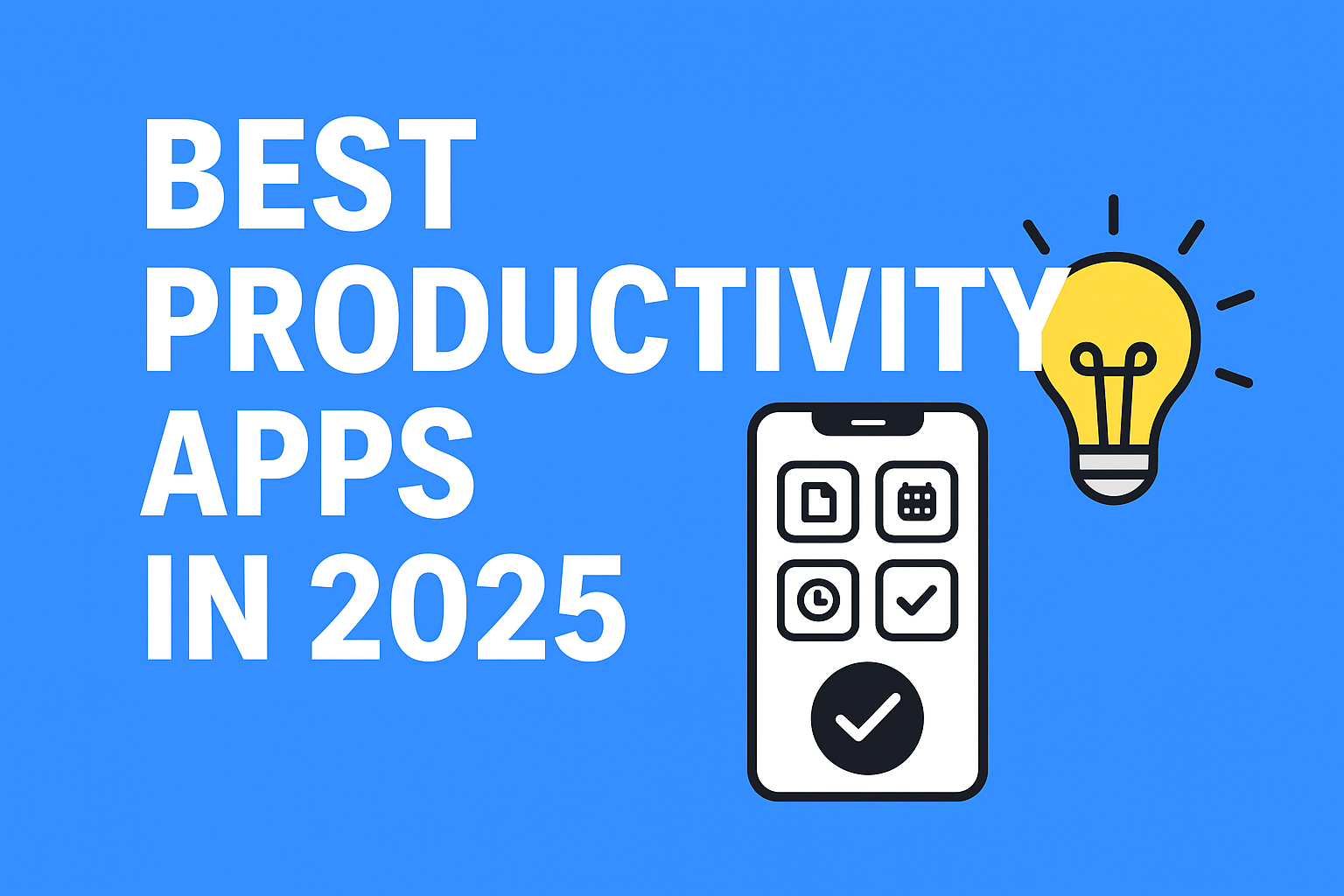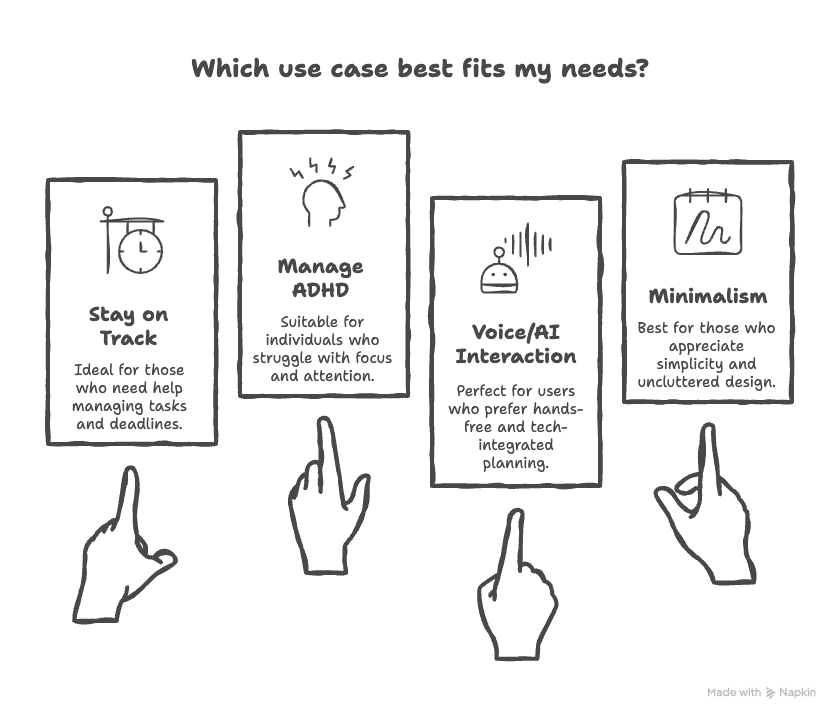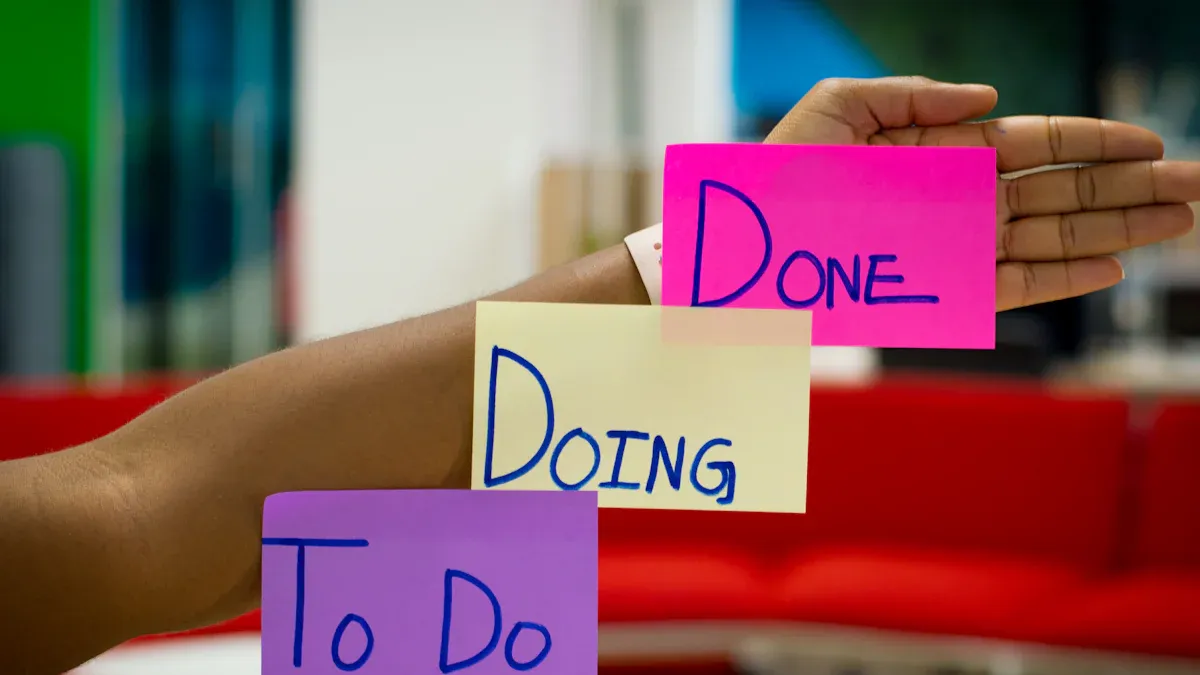
Here are the 9 best planners for productivity apps in 2025:
These apps are special because they use smart AI, have a simple design, and let you sync across devices. Many also support customization and integrations, making them useful for both students and professionals.
Features That Make These Apps Special
| Feature | What It Means |
|---|---|
| Cross-Platform Consistency | Access your tasks anywhere |
| Smart Integrations | Connect with your favorite tools |
| Flexibility by Role | Useful for students and professionals |
| Ease of Use | Simple, clear design |
| AI Enhancements | Smarter scheduling and task management |
| Customization | Make the app fit your own workflow |
Key Takeaways
- Choose a productivity planner that fits your workflow.
- Consider whether you work alone or with a team.
- Look for apps with smart features automation and integration.
- Start with free versions before committing.
- Minimalist planners help you stay focused.
- Use planners with task management and reminders.
1. Codot
Features
Codot gives you an AI helper that feels real. You can use voice or chat to talk to Codot. It saves your ideas, organizes tasks, and sorts them by priority and deadlines. Reminders adapt to your habits, and Codot integrates with your daily tools.
Why Codot is Special
Codot avoids feature bloat. It gives you only what you need so you stay focused.
Pros & Cons
Pros
- AI-powered assistant
- Voice and chat interaction
- Intelligent task prioritization
- Adaptive reminders
- Seamless integration
- Minimalist design
- Great for ADHD and focus
Cons - Limited compared to feature-heavy platforms
Pricing
- Free plan available
You can get Codot from the App Store and experience the free beta version.
Use Cases
- You want a planner that keeps you on track
- You have ADHD or get distracted easily
- You like voice/AI interaction
- You prefer minimalism

2. monday.com
Features
monday.com is an AI-driven work OS for teams. It helps organize projects, automate workflows and connect with tools like Slack and Google Drive. It works well for marketing, sales, and IT.
Pros & Cons
Pros
- Strong AI automation
- Great for collaboration
- Customizable workflows
- Real-time tracking
- Wide integrations
Cons
- Can feel complex at first
- Setup required
Pricing
- Free plan available (limited)
- Paid plans: Start at $9/user/month
Use Cases
You can use monday.com to manage a team or projects. Marketing teams use it to launch campaigns faster. Sales teams track leads and close deals. IT teams manage support tickets and resources. Product teams plan sprints and releases. If you want a top planner for productivity, monday.com gives you tools to help your whole organization.
3. Trello
Features
Trello uses boards, lists, and cards for visual task management. It includes calendar sync, automation, integrations, and templates.
Pros & Cons
Pros
- Simple, visual layout
- Easy to customize
- Works for individuals and teams
- Automation saves time
Cons
- Feature bloat for some users
- Advanced tools require setup

Pricing
- Free plan available
- Paid plans: Start at $5/month Tip: If you want a planner that does not distract you, use only the basic boards and lists in Trello. A simple workflow can help you focus more.
Use Cases
You can use Trello for personal tasks, school projects, or team work. Many people use it to plan events, track goals, and organize daily routines. Teams use Trello to run meetings, assign tasks, and check progress. Trello is a top planner for productivity because you can change it to fit your needs.
4. ClickUp
Features
ClickUp is an pall-in-one workspace](https://www.siit.io/tools/trending/clickup-review) with tasks, projects, docs, and chat. It integrates with 1,000+ apps, uses AI for automation, and offers customizable workflows. Note: ClickUp has lots of features. If you want a simple planner, you might think there are too many choices. Some people like a basic AI helper to help them focus.
Pros & Cons
Pros
- Powerful AI & automation
- Highly customizable
- Great for teams and solo work
Cons
- Overwhelming for beginners
- Advanced learning curve
Pricing
- Free plan available
- Paid plans: Start at $7/user/month
5. Todoist
Features
Todoist offers simple task management with cross-device sync, offline support, labels, and filters. Reliable for daily planning.
Pros & Cons
Pros
- Easy to use
- Syncs across devices
- Works offline
- Clean, minimal interface
Cons - Limited advanced features
Pricing
- Free plan available
- Paid plans: Start at $4/month
6. Notion
Features
Notion combines note-taking, databases, templates, and collaboration in one workspace. It integrates with tools like Slack and Google Drive, and has strong AI features.
Pros & Cons
Pros
- Highly customizable
- Versatile (notes, wikis, projects)
- Unlimited pages/blocks
Cons - Feature-heavy, may feel complex
Pricing
- Free plan available
- Paid plans: Start at $8/month
7. Asana
Features
Asana focuses on project and task management with timelines, boards, automation, and team collaboration.
Pros & Cons
Pros
- Great for teams
- Real-time updates
- Integrates with many apps
Cons
- Steeper learning curve
- Feature overload for simple users
Pricing
- Free plan available
- Paid plans: Start at $13.49/month
8. Sunsama
Features
Sunsama is a daily planner with structure. It helps schedule tasks, integrates with calendars, and automatically rolls over unfinished work.
Pros & Cons
Pros
- Easy daily planning
- Automatic rollover
- Strong integrations
Cons
- Premium pricing
- More structured than minimalist
Pricing
- Free trial only
- Paid plan: $20/month
9. Motion
Features
Motion uses AI to auto-plan your day. It dynamically adjusts schedules, integrates calendars, and manages tasks in one platform.
Pros & Cons
Pros
- AI-powered daily planning
- Dynamic scheduling
- Great for teams
Cons
- Expensive compared to others
- Steeper learning curve
Pricing
- Free trial only
- Paid plan: $19/month
Best Planners for Productivity: Comparison

Features Overview
| App | Key Features |
|---|---|
| Codot | AI assistant, voice/chat input, smart prioritization, adaptive reminders, minimalist design |
| monday.com | AI automation, team collaboration, resource tracking, custom workflows |
| Trello | Boards, Inbox, Planner, integrations, automation |
| ClickUp | All-in-one workspace, 1,000+ integrations, automation |
| Todoist | Cross-device sync, offline use, simple daily tasks |
| Notion | Notes, templates, collaboration, databases |
| Asana | Project timeline, automation, workload management |
| Sunsama | Daily planning, task rollover, calendar sync |
| Motion | AI-driven planning, dynamic scheduling, calendar+tasks |
- Having too many features can make things harder. If you want to focus, try a simple planner like Codot. It helps you avoid distractions.
Pricing Comparison
| App | Free Plan | Paid Plan Starting Price (per user/month) |
|---|---|---|
| Codot | Yes | $4.99 |
| monday.com | Yes (limited) | $9 |
| Trello | Yes | $5 |
| ClickUp | Yes | $7 |
| Todoist | Yes | $4 |
| Notion | Yes | $8 |
| Asana | Yes | $13.49 |
| Sunsama | Free trial only | $20 |
| Motion | Free trial only | $19 |
Choosing the Best Planner
- Codot → Minimalist, AI-first
- monday.com → Team automation
- Trello → Visual boards
- ClickUp → All-in-one powerhouse
- Todoist → Simple daily planning
- Notion → Flexible and creative
- Asana → Big projects, teamwork
- Sunsama → Structured daily planning
- Motion → AI-driven scheduling
FAQ
Q: What makes a productivity planner app effective?
A: Simplicity + smart AI features. Too many features can distract you.
Q: Can too many features hurt my productivity?
A: Yes, feature bloat slows you down.
Q: How do I pick the right planner?
A: Try free plans, match the app to your workflow.
Q: Why do some people prefer minimalist planners?
A: They reduce distractions and keep your focus.
Q: Do these apps work for both teams and individuals?
A: Yes. Some are better for teams (monday.com, Asana) and others for individuals (Codot, Todoist).